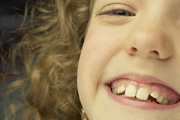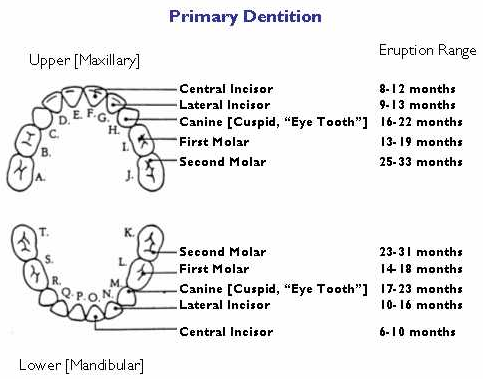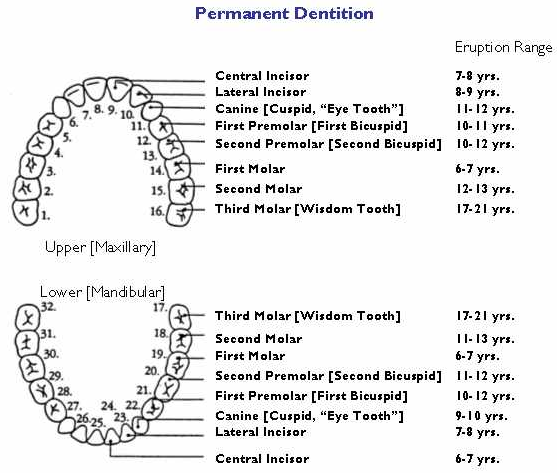The Developing Dentition: What to Expect
 Usually, a baby's teeth are not visible at birth, but they are present under the gums. However, sometimes a baby is born with 1-2 teeth. Women who breast-feed will have to be careful, or they will be bitten. We will get two sets of teeth – 20 baby teeth [also known as primary or deciduous] and 32 permanent teeth.
Usually, a baby's teeth are not visible at birth, but they are present under the gums. However, sometimes a baby is born with 1-2 teeth. Women who breast-feed will have to be careful, or they will be bitten. We will get two sets of teeth – 20 baby teeth [also known as primary or deciduous] and 32 permanent teeth.
As the primary teeth get ready to erupt into the mouth, the gums get hard, red and swollen. This process called "teething" can also cause discomfort, excessive drooling, runny noses, low-grade temperature and/or overall crankiness. However, each child may exhibit some differences, so there is an average range within which tooth eruption occurs [see chart]. For example, if a child is breathing in second-hand smoke from one or both parent smokers, the eruption of his/her teeth can be delayed 4-5 months.

The two lower front teeth [deciduous central incisors] are typically the first to arrive when the child is 6-8 months old. There will be periodic eruption of the rest of the primary teeth, usually in pairs on both sides of the jaws. By the time your child is 2½ years old, all of the deciduous teeth should be visible. Eventually, the primary teeth will become loose and fall out or be removed easily. Their permanent counterparts should replace all of the primary teeth. It's important, however, to maintain a child's primary teeth. They are necessary for chewing food properly, speech, and physical appearance. If a primary tooth decays and abscesses, it could damage the developing bud of the permanent tooth underneath. Also, premature loss of a back [posterior] primary tooth could reduce the amount of space necessary for its permanent replacement. In the primary dentition, large spaces between the teeth are normal.

Usually, the first permanent teeth to erupt are the child's four first molars that do not replace any teeth but come in directly behind the child's deciduous second molars. This occurs at about 5½ - 6 year old [sometimes called the six-year molars]. The progression of tooth replacement/eruption follows with the four permanent front teeth [central incisors] at about age 6-7. The eruption of the permanent teeth is almost complete at age 12-13 when the second permanent molars come in. The third molars [wisdom teeth] may erupt anywhere between 17- to 21 plus years. It's quite common for wisdom teeth to be impacted in the bone and never erupt. Sometimes other permanent teeth are congenitally missing and will never be present. This is typically diagnosed with proper x-rays [radiographs]. One of the concerns that we verify at the check-up appointment is that your child's teeth are developing properly and taking their correct position in the mouth. If you have questions regarding your child's teeth development or eruption pattern, please call our office.